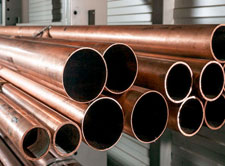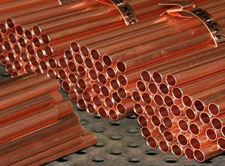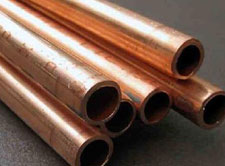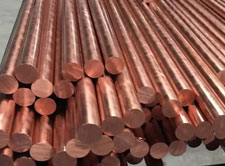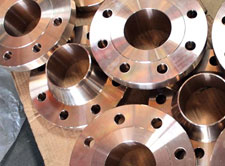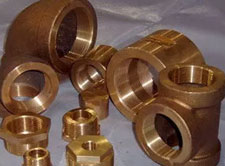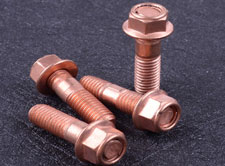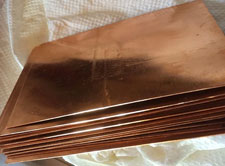CUPRO NICKEL
- Home
- CUPRO NICKEL
Cupro Nickel 200 Pipe/ Cupro Nickel 201 Pipe suppliers
Cupro Nickel suppliers, Cupro Nickel Products stockist
Cupro Nickel Material, Cupro Nickel Price in India, Cupro Nickel Price per Kg
Copper-nickel or cupronickel is an alloy of copper, which contains a high concentration of manganese, copper, iron, and nickel. The Copper Nickel Pipe is designed with superior strength and excellent corrosion resistance properties. These pipes can be machined and fabricated easily.
SHAPES :- SEAMLESS PIPES / ERW PIPES / PIPES FITTINGS /
FORGE FITTINGS / FASTNERS / ANCHORS / TUBES / ROUND BARS / HEX BARS / SQUARE
BARS / FLAT / SHEETS - PLATES / COILS / ANGLES / CHANNELS / FLANGES ETC
The addition of nickel to copper improves strength and corrosion resistance while allowing the alloy to remain ductile. Other elements can be added to copper-nickel to increase strength, corrosion resistance, hardening, weldability and castability.
| Standards | Applicable Standard Numbers | ||||||||
|---|---|---|---|---|---|---|---|---|---|
| Composition | Plate | Sheet | Strip | Tube | Rod | Wire | Forgings | Castings | |
| ASTM | 122 171 |
122 | 122 | 111 359 395 466 467 469§ 552 543 608 |
122 151 |
369 505‡ |
|||
| EN | 1652 1653 |
1652 1653 |
1652 1654 |
12451 12449 |
12163 | 12420 | 1982 | ||
| ISO | 429 | 1634 | 1634 | 1634 | 1635 |
1637 |
1638 | 1640 | |
90-10 copper-nickel (C70600, CW352H), an alloy with 90% copper and 10% nickel, is the most commonly used alloy. It can be found in naval and commercial shipping, offshore oil and gas production as well as desalination and power generation. Alloys with 30% nickel content (C71500, C71640) and those which are more highly alloyed with aluminum, chromium or tin are used where greater resistance to seawater flow, sand abrasion, wear and galling, as well as higher mechanical properties, are required.
.png)
